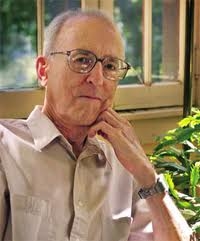
Throughout his career, Eville Gorham let his curiosity about nature and science direct his course. Serendipitously, it led to landmark discoveries about acid rain and nuclear fallout that in turn led to the Nuclear Test Ban Treaty and legislation that dramatically reduced levels of atmospheric sulfur dioxide, a pollutant linked to lung disease.
Not surprisingly, he is a strong believer in the value of basic science research because it has always led him to novel conclusions with useful applications for humankind. In this interview he discusses those scientific journeys with friend and colleague Clarence Lehman, associate dean of research for the College of Biological Sciences, and shares his words of wisdom about the relationship between humans and the environment.
Born in 1925, Gorham grew up in Nova Scotia, “shy and introspective,” he once wrote, a compulsive reader of anything he could lay his hands on. His natural curiosity about the world around him inspired an early interest in biology. He attended Dalhousie University in Halifax and earned a doctorate at University College in London, where he studied acidification of woodlands and wetlands in England’s Lake District. He joined the University of Minnesota’s Botany Department (now Plant Biology) in 1962 and was a founding member of the College of Biological Sciences when it was established in 1965.
Gorham recognized that the acidity in bogs was due to acid rain, “which I viewed not as an environmental problem but simply as a fascinating subject for research.” Acid rain was known, but Gorham demonstrated that the atmosphere transported the pollutants (produced by combustion of fossil fuels) much farther than anyone imagined.
He also discovered that lichens and mosses were concentrating atmospheric radioactive fallout. After reading that reindeer were more radioactive than sheep, Gorham predicted that the people of the Arctic, the Inuit and Sami, would also have high levels of radioactivity because they consumed the reindeer and caribou that ate contaminated lichens. Subsequent research proved him right. That research, says Gorham, was “perhaps the most fascinating work I have done.”
Gorham’s is a member of the National Academy of Sciences, a Fellow of the American Association for the Advancement of Science, and a Regents Professor Emeritus. He retired in 1998, but continues to study the relationship between wetlands and the atmosphere. He received the Society of Wetland Scientists Lifetime Achievement Award in 2005.